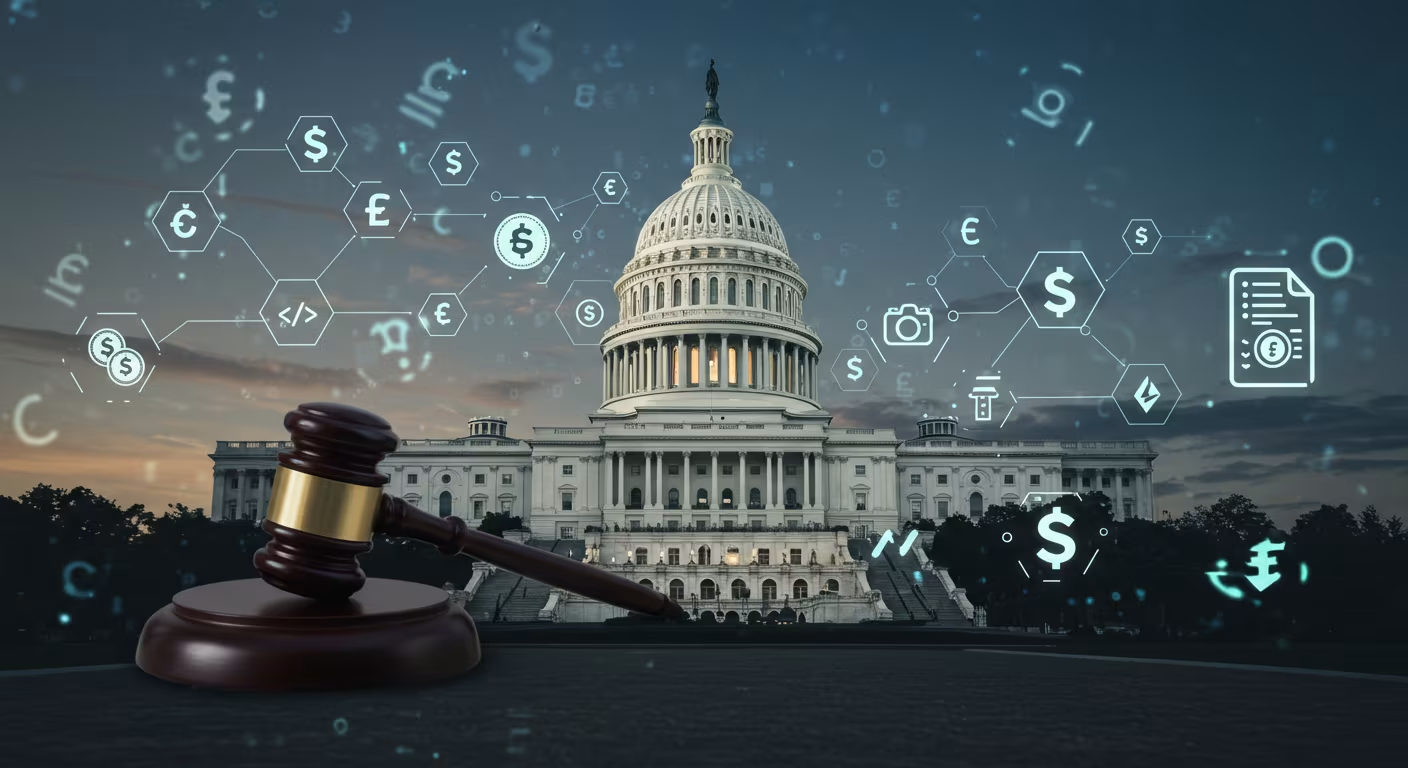In a landmark moment for the digital finance industry, the U.S. Congress has passed and enacted the GENIUS Act—short for “Guidelines for Enhancing National Innovation in U.S. Stablecoins”. Touted as the first comprehensive legislative framework dedicated to regulating stablecoins and blockchain-based payment systems, this law represents a major shift in how the U.S. government engages with the rapidly evolving crypto economy.
The GENIUS Act sets the stage for a new era of regulatory clarity, technological innovation, and financial inclusion. It addresses everything from issuer licensing and reserve backing to consumer protections and cross-border payments. For fintechs, crypto startups, banks, and investors, this law marks a significant turning point—especially as stablecoins become more widely used in commerce, remittances, and decentralized applications.
So, what exactly is in the GENIUS Act, and how will it affect the future of stablecoins, payment infrastructure, and digital money innovation? Here’s everything you need to know.
What Is the GENIUS Act?
The GENIUS Act is a bipartisan bill designed to bring structure and legal recognition to U.S.-issued stablecoins. It creates a regulated path for companies to issue stablecoins pegged to the U.S. dollar while enforcing minimum standards around security, solvency, and transparency.
The Act aims to:
- Define what constitutes a qualified stablecoin
- Establish a licensing regime for stablecoin issuers
- Require full reserve backing of assets with audited transparency
- Ensure interoperability between blockchain networks and legacy systems
- Introduce consumer protections around redemptions and disclosures
- Facilitate adoption of blockchain-based payment rails in mainstream finance
The law is administered primarily through the U.S. Treasury Department, in coordination with the Federal Reserve, SEC, and CFTC, depending on the asset type and issuer classification.
Why the GENIUS Act Matters Now
Stablecoins like USDC, USDT, and DAI have grown exponentially in usage, with transaction volumes rivaling traditional settlement networks. They are used for everything from crypto trading and lending to payroll, remittances, and e-commerce. However, their legal status has long been uncertain, creating risk for issuers, consumers, and regulators alike.
The collapse of algorithmic stablecoin projects (like TerraUSD), increasing institutional adoption, and the global push for CBDCs (central bank digital currencies) made the case for regulatory action urgent and unavoidable.
The GENIUS Act provides a clear answer: stablecoins are welcome—but only with guardrails that ensure stability, compliance, and integration with the broader financial system.
Key Provisions of the GENIUS Act
- Stablecoin Issuer Licensing
Companies issuing stablecoins must now register as “Qualified Digital Payment Institutions (QDPIs)” with the U.S. Treasury. To qualify, issuers must:
- Be incorporated in the U.S.
- Maintain 1:1 reserve backing in highly liquid assets (e.g., U.S. Treasuries, insured bank deposits)
- Undergo regular audits by approved third parties
- Comply with AML/KYC standards
- Establish protocols for secure redemptions and dispute resolution
Existing issuers have a 12-month window to become compliant or cease operations within U.S. jurisdictions.
- Full Reserve & Audit Requirements
Stablecoins must be fully backed by auditable, high-quality reserves, meaning no fractional reserve practices are allowed. Reserves must be held in segregated accounts and made available for inspection by regulators.
Monthly reserve disclosures and independent attestation reports are now mandatory for all QDPI license holders.
- Consumer Protections
The Act requires clear, standardized disclosures for users, including:
- Redemption rights and timelines
- Reserve asset composition
- Legal recourse in the event of issuer insolvency
- Fee structures and risks
Users must be able to redeem stablecoins at par value (1:1 to USD) upon request within a designated time frame, ensuring liquidity and trust in the system.
- Interoperability Standards
To avoid network silos and fragmentation, the GENIUS Act encourages open standards and cross-chain interoperability. Issuers must publish technical documentation that facilitates seamless integration with other digital wallets, payment apps, and financial systems.
The Act also lays the foundation for integration with FedNow, the Federal Reserve’s instant payment infrastructure, which could give stablecoins a direct link to U.S. banking rails.
- Anti-Money Laundering & National Security
All issuers must implement robust AML, CTF, and sanctions screening. The Treasury Department will maintain a whitelist of compliant smart contracts and wallets. Issuers who fail to meet compliance standards may face fines, license revocation, or criminal prosecution.
- Pilot Program for Public-Private Blockchain Payments
The Act launches a government-backed pilot program, allowing selected QDPIs to partner with federal agencies and commercial banks to test blockchain-based payments for:
- Federal benefit distribution
- Emergency aid
- Cross-border settlements
- Municipal finance
The goal is to evaluate stablecoin efficiency as a supplement to traditional payment systems under real-world conditions.
What This Means for Stablecoin Issuers
The GENIUS Act gives well-established, compliant stablecoin providers like Circle (USDC) and Paxos (USDP) a clear regulatory framework that could drive institutional confidence and adoption. These firms are likely to benefit from first-mover advantage and may find it easier to form partnerships with banks and fintech platforms.
On the other hand, unlicensed or opaque issuers may face intensified scrutiny, delistings, or forced shutdowns, especially on U.S.-based exchanges. Algorithmic or over-collateralized stablecoins will need to rework their models to align with the law’s definitions and capital requirements.
Implications for Blockchain Payments & DeFi
The GENIUS Act could be a catalyst for mainstream adoption of blockchain payments. With stablecoins now legally recognized, merchants, payroll processors, remittance providers, and DeFi platforms can operate with greater clarity and less risk.
This could result in:
- Lower transaction fees and faster settlements than traditional card networks
- Expanded cross-border commerce using stablecoin rails
- Increased liquidity in DeFi protocols due to improved regulatory certainty
- More partnerships between banks and blockchain firms leveraging tokenized dollars
However, DeFi platforms using unregistered or noncompliant tokens may face new limitations or enforcement actions if they serve U.S. users.
A Regulatory Leap Toward a Digital Dollar Economy
The GENIUS Act isn’t just another crypto law—it’s a transformational framework that connects blockchain innovation with real-world financial regulation. By recognizing and regulating stablecoins, the U.S. has taken a definitive step toward legitimizing tokenized money as part of the national payment infrastructure.
For stablecoin issuers, the road ahead involves adaptation, transparency, and compliance. For businesses and developers, it opens the door to faster, cheaper, and programmable payments that could change how money moves in the 21st century.
In short, the GENIUS Act could be the blueprint for the next generation of digital finance—one where trust, technology, and policy finally align.





